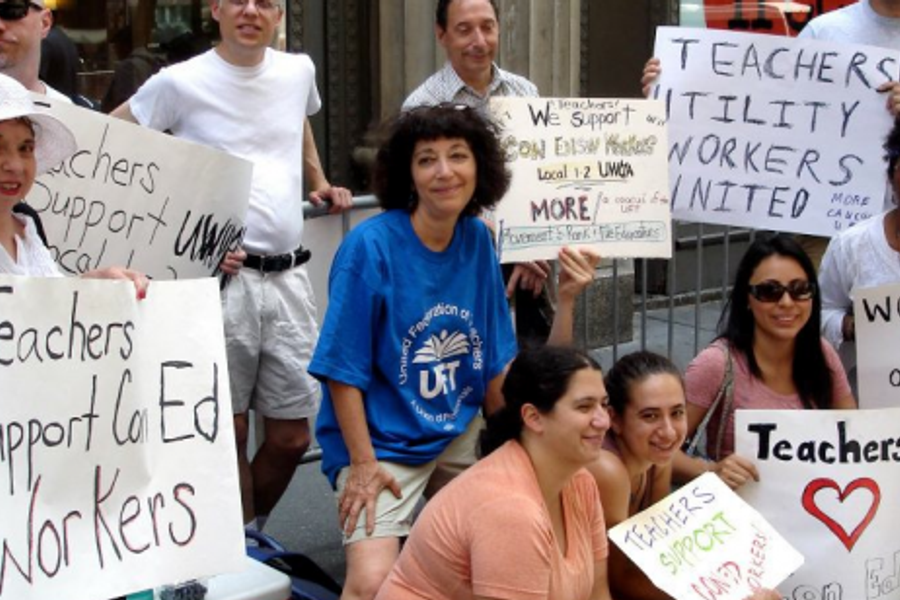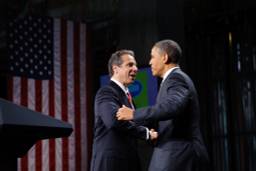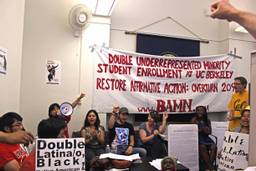
Last September’s Chicago teachers strike, organized — and won — by an unapologetically democratic, community-centered union, gave hope to laborites across the country that there could be a functional American labor movement.
Now, a caucus of unionists seeks to remake New York’s United Federation of Teachers, the city’s local of the American Federation of Teachers, in the CTU’s mold. The Movement of Rank-and-File Educators (MORE) was founded last spring as an alliance of teacher caucuses and activist groups. The caucus stands unconditionally opposed to school closings, retributive punishment of students, and the “junk science” of evaluating teachers based on student tests. “Teachers need to play the role in laying a platform for parents and students,” says Marissa Torres, MORE’s candidate for assistant treasurer in next month’s elections. Torres calls for the UFT, like the Chicago Teachers Union, to foreground explicit anti-racism and collective struggle.
What issues should In These Times cover in 2013? We want to hear from you. Take our quick poll.
MORE’s sharpest point of departure from current leadership is over union governance. It demands elections for district representatives, which became appointed positions in 2003 under then-president Randi Weingarten (now the head of the AFT). As a caucus that counts parents among its members, it also advocates parent representation on the union’s executive board.
Unlike Chicago’s governing Caucus of Rank-and-File Educators (CORE), though, MORE faces safely ensconced union leadership. The Unity Caucus has been in power ever since the union’s founding in 1960. Former UFT member Lois Weiner argues in her recent book, The Future of Our Schools: Teachers Unions and Social Justice, that Unity’s unchecked reign has ossified the union. “The UFT has indeed been able to protect many of the vestiges of the old system by calling in its political chops,” she writes, but “has done so at the expense of alienating its natural allies, insulating the bureaucracy and allowing the union to all but disappear at the school.” At a February panel organized by MORE, Weiner cautioned caucus members not to focus only on capturing union leadership, but to reinvent the union through organizing, inside and out.
With union elections coming up and a fight with the city over teacher evaluation still raging, MORE has a host of opportunities to build support for its alternative model of teacher unionism.
Bloomberg-style elections
This spring’s UFT elections are unlikely to propel MORE into union leadership, but will serve as a test of its ground game. Elections are a time for “accountability, conversation, outreach, relationship building,” says Julie Cavanagh, MORE’s candidate for union president. Describing the union culture that MORE is trying to create, she says, “Spaces would exist for discourse, dialogue, and analysis. Questions could be asked and answered. A vision for the next three years would be presented and collectively discussed.”
To this end, MORE has used the elections as a launching pad for member-to-member outreach. Teachers have held countless regional forums and meet-ups to build a network of chapter leaders and members and organize at school sites. The caucus also maintains an active online presence and, like its counterparts in Chicago, hosts a reading group (covering Weiner’s book, among others).
Although the UFT has a long history of dissident caucuses, none have been able to unseat Unity leadership — thanks in part to the union’s heavy incumbent bias. Of the 90 members on its executive board, only 23 are elected exclusively by teachers from particular strata — elementary, middle and high school. The rest of the board — 19 “functionals” (non-teaching staff) and 48 at-large positions — are, like the 12-person leadership slate, voted on by workers and retirees alike. The retiree vote puts non-incumbents in a fix: Although challenger caucuses like MORE can access every teacher’s mailbox and buy a chapter leader list for mailings, they have no way of directly reaching out to retirees.
“Unity has been the only game in town,” says one retiree who taught high school social studies in Brooklyn for 24 years and agreed to speak on condition of anonymity. Though he expressed disappointment with union leadership over its handling of laid off teachers and its inability to roll back the mayor’s yearly tide of school closings — which included his own — he hasn’t heard from MORE and retains de facto Unity membership.
Compromise to the top?
Meanwhile, labor-management negotiations have become a theater of contention between MORE and Unity over how assertive — and how democratic — the union should be.
Last year, the Unity leadership decided to sign onto the city’s application for $40 million in federal Race to the Top funds, drawing criticism from MORE. Cavanagh slammed the leadership for accepting a greater role for standardized tests in teacher evaluations — a precondition for Race to the Top funding — in exchange for online learning grants with unproven benefits. “We should take a look at what we know works,” she said, “and not spend millions of dollars on experiments on other people’s children.”
New York City ultimately lost its Race to the Top bid for declining to provide requested information about its budget.
In response to MORE’s criticisms, Leo Casey, co-chair of the UFT’s evaluation negotiation committee, stressed the importance of finding common ground with the city. “The union’s position was that we needed to engage,” he said in an interview with Working In These Times, “and we needed to get the best possible evaluation system for our members that we could.”
Casey dismissed those opposed to the Unity leadership as “in the thrall of the apolitical romance of ‘revolutionary virtue’” and of the belief that “it is better to die gloriously on the field of battle protecting one’s virtue than to live to fight another day.” He accused dissidents of ignoring “the balance of power and of different forces” and using “rank-and-file empowerment and mobilization” as “the answer to every question.”
Who negotiates?
MORE’s emphasis on “empowerment and mobilization” has been evident in the union’s ongoing battle with the Bloomberg administration over a new evaluation system. Governor Andrew Cuomo demanded last spring that all districts negotiate new formulas for rating teachers by January 17, 2013, or risk hundreds of millions in sanctions. MORE maneuvered to involve rank-and-filers in the negotiations, gathering some 1,000 signatures on a petition calling for a member-wide referendum on all extra-contractual agreements. The UFT’s December 12 Delegate Assembly, however, dominated by the governing Unity Caucus, overwhelmingly voted down the proposal.
Negotiations between the union and the city on the new evaluation system fell through at the eleventh hour — which the union (and an unusually sympathetic New York Times) laid at the feet of the administration. While parent advocates won a legal battle to recoup the $250 million in punishment levied by the state, if no deal is reached by May 29, negotiations fall in the hands of a dubiously impartial arbitrator — state education commissioner John King.
The union leadership issued a statement expressing general approval of the arbitration process: “We’ve seen the kinds of plans the state has approved and we are comfortable with them because they are about helping teachers help kids.” MORE responds, “Any responsible union, led by people who care about the status of their members, would seek only a fair and independent arbitration process.”
As evidence of a current lack of democracy in negotiations, those clamoring for a new unionism cite emails such as one sent by a district representative to chapter leaders after a meeting in January. “It is not the place nor the time to get on a soapbox and speak about what you want to speak about,” the email reads. “We present the information, not to be filtered by you or to be changed in any way, it is to be presented to your members as you have heard it from me or any of the leadership in this union.”
The same day that email was sent, the union was criticized for being antidemocratic by a very different dissenter: Mayor Bloomberg. Responding to a union television ad blasting him for injecting dirty politics into evaluation negotiations, he compared it to the National Rifle Association, “another place where the membership, if you do the polling, doesn’t agree with the leadership.”
The union issued a stern rebuke—and the progressive media joined the uproar. But how the union can prevail in negotiations and defeat Bloomberg-allied forces in the long term is less obvious. Reacting to the Chicago teachers strike, UFT President Michael Mulgrew said, “The lesson for us here in New York is simple: Our ability to push back those so-called ‘reformers’ with their anti-teacher agenda depends in large measure on electing local and state representatives who understand and appreciate the importance of the work that we do every day in the classroom.”
The union is hopeful that Bloomberg’s successor, elected this year, will be more labor-friendly. By contrast, MORE’s approach is to take Bloomberg’s statement on the UFT’s member-leader rift and run with it — “occupying the union,” as Weiner’s book advocates, by elevating the voices of rank-and-filers and pushing for a CTU-style leadership that leverages these voices for political power.







